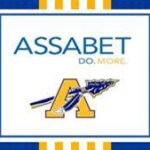Colleagues,
A team of Assabet Valley Regional Technical High School students are collaborating on a project that will see their work assist with experiments in outer space. The students are part of HUNCH (High School Students United with NASA to Create Hardware), an instructional partnership between NASA and local school districts.
We are proud and commend these students on their efforts to assist the Unted States Space program!
Have a wonderful weekend!
David
Assabet Valley Tech Students Creating Hardware for Space Experiments
June 8, 2023 Tom Zuppa
MARLBOROUGH – Superintendent Ernest F. Houle is pleased to share that a team of Assabet Valley Regional Technical High School students are collaborating on a project that will see their work assist with experiments in outer space.
About 10 sophomores and juniors in the Advanced Manufacturing program, under the guidance of instructors David Sommerville and John Allard, are making two parts for a cube satellite that will hold testing and data collection components on satellites that are launched from the International Space Station.
The students are part of HUNCH (High School Students United with NASA to Create Hardware), an instructional partnership between NASA and local school districts. Students are tasked with creating cost-effective hardware and soft goods in collaboration with HUNCH team members.
The HUNCH program works with more than 500 school districts in 46 states. HUNCH projects cover six areas: culinary, design and prototyping, design for flight, hardware, soft goods, and video and media. Assabet students used Mastercam software and computer numerical control machines to create test parts. These parts passed NASA’s quality assurance review, allowing entry into the HUNCH program.
Students also met with Dr. Florence Gold, NASA Johnson Space Center HUNCH Mentor for Massachusetts, during a kickoff event.
“Once we had determined how the parts were going to be made, the sophomore students became the driving force,” Sommerville said.
The students meet for one period each week, continually refining their design to meet NASA’s exacting standards.
The parts will be used in a to-be-determined low Earth orbit experiment, about one year after NASA approves the students’ final work.
“CTE where STEM Goes to Work”
David J. Ferreira
MAVA Communications Coordinator
DavidFerreira



